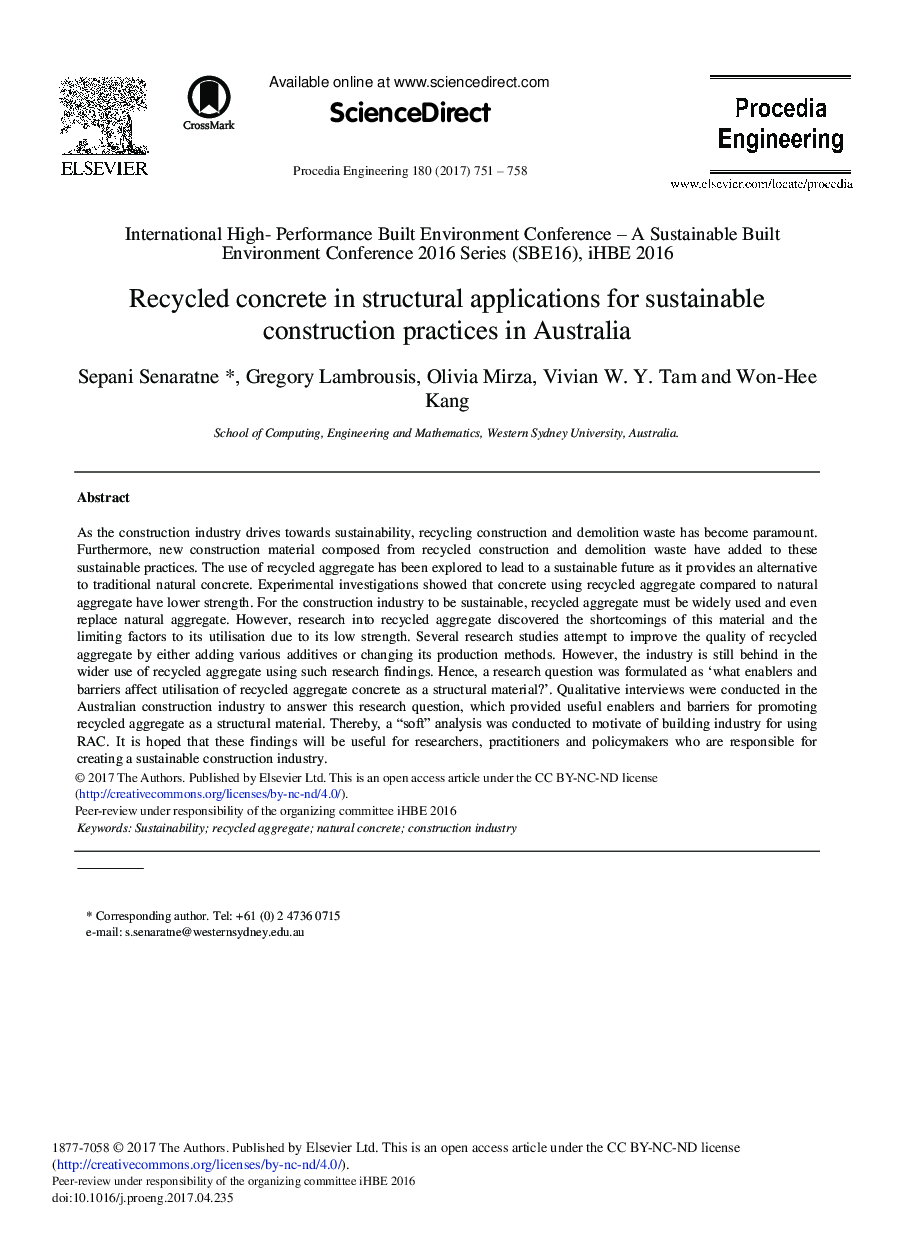| Article ID | Journal | Published Year | Pages | File Type |
|---|---|---|---|---|
| 5028980 | Procedia Engineering | 2017 | 8 Pages |
As the construction industry drives towards sustainability, recycling construction and demolition waste has become paramount. Furthermore, new construction material composed from recycled construction and demolition waste have added to these sustainable practices. The use of recycled aggregate has been explored to lead to a sustainable future as it provides an alternative to traditional natural concrete. Experimental investigations showed that concrete using recycled aggregate compared to natural aggregate have lower strength. For the construction industry to be sustainable, recycled aggregate must be widely used and even replace natural aggregate. However, research into recycled aggregate discovered the shortcomings of this material and the limiting factors to its utilisation due to its low strength. Several research studies attempt to improve the quality of recycled aggregate by either adding various additives or changing its production methods. However, the industry is still behind in the wider use of recycled aggregate using such research findings. Hence, a research question was formulated as 'what enablers and barriers affect utilisation of recycled aggregate concrete as a structural material?'. Qualitative interviews were conducted in the Australian construction industry to answer this research question, which provided useful enablers and barriers for promoting recycled aggregate as a structural material. Thereby, a “soft” analysis was conducted to motivate of building industry for using RAC. It is hoped that these findings will be useful for researchers, practitioners and policymakers who are responsible for creating a sustainable construction industry.
